Rhinoplasty for African noses in Iran
Are you looking for Ethnic Rhinoplasty?
With the best result and the safest trip?
Contact us now!
- Duration: 1 – 2 Hours
- Total Stay: 8 Day
- Anesthesia: General
- Clinic Stay: 1 Day
- Recovery: 3 to 6 Months
Ethnic Rhinoplasty Steps
Get informed guidance every step of the way – each step of the process, from initial inquiry to postsurgical care, is mapped out in detail so you know what to expect.
Rhinoplasty for African noses Packages
Pay only for talent- Our tiered system offers different levels of care based on surgeon experience and reputation, allowing you to choose the right fit for your needs and budget.
You’ll need to pay a separate fee for Canadian, American, and Britis Visas.
Ethnic Rhinoplasty Cost in Iran
In Iran, ethnic rhinoplasty costs from $2,000 to $3,500 USD. The cost varies depending on the surgeon’s experience, clinic location, complexity of the case, revision surgery, and other factors. Top clinics in Tehran and other major cities charge higher fees. Revision Ethnic Rhinoplasty in Iran cost falls somewhere between $2,500 – $4,000 USD.
African Rhinoplasty before and after
Here are our dramatic yet tasteful transformations of ethnic noses. The images show noses that retain their heritage but have a sloped bridge, narrowed nostrils, and refined nose tips. A subtle enhancement enhances facial harmony and boosts patients’ confidence, and our skilled surgeons can reshape your nose with precision and artistry.
Rhinoplasty for African noses in Iran video
Ethnic rhinoplasty is a personal journey unique to you. Whether you want to enhance natural beauty or restore your confidence, we understand this decision can feel overwhelming. But you don’t have to figure it out alone.
At IranHealthAgency, connecting with our patients is what matters most. From your initial consultation to follow-up appointments, our caring specialists will be there to listen, educate, and guide you. Forget stiff sales pitches – think warm conversations over tea, getting to know your heritage, aesthetic goals, and what success means for you.
We specialize in ethnic rhinoplasty techniques such as augmentation, narrowing, smoothing bumps, refining tips, and more. Our meticulous, customized approach helps bring balance and proportion to your natural features. And we handle each patient with the utmost care, respect, and compassion.
Best surgeons for African rhinoplasty in Iran
Ethnic rhinoplasty requires surgical finesse and artistic vision. Iranians are of a variety of ethnicities, including Persians, Armenians, Arabs, Turks, and more.
An experienced and skilled specialist can give patients a perfectly refined yet natural-looking nose, which boosts self-confidence without losing ethnic identity.
We have compiled a list of top Iranian ethnic rhinoplasty surgeons based on their experience, artistic vision, technique, results, and patient satisfaction to help patients find top specialists. There are many competent surgeons in Iran, but these individuals specialize in Middle Eastern, Persian, and Armenian rhinoplasty.
The best rhinoplasty surgeon in Iran is Dr. Rajaei. His skills, artistic vision, and commitment to patient satisfaction make him the best in the field of rhinoplasty. He specializes in Middle Eastern, Persian, and Armenian rhinoplasty.
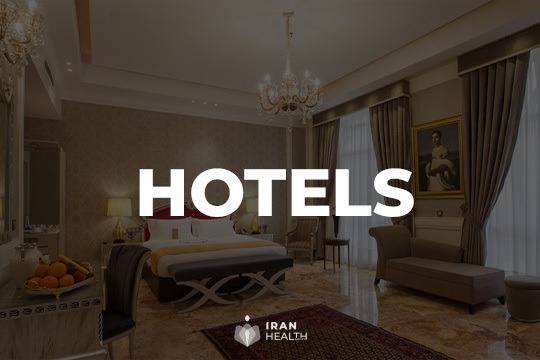
Our Hotels
International care, local comfort
Accommodation is one of the services that Iran health agency provides for its clients. we are here to book hotel, hostel or recovery house according to your budget, hospital and clinic location.
to meet your comfort needs Booking of the accommodation is done in advance. After airport pick-up you will directly be transferred to hotel so it helps a lot to save your time.
Reviews
What is ethnic rhinoplasty?
Ethnic rhinoplasty is a type of Rhinoplasty (nose surgery) designed for people of specific cultural backgrounds, like Middle Eastern, African American, Hispanic, or Asian. It aims to enhance natural nasal characteristics and proportions while preserving ethnic identity. In Iran, it is commonly performed on patients of Persian, Armenian, Turkic, and other ethnicities originating in the region.

Rhinoplasty and ethnic nose jobs: what’s the difference?
Ethnic rhinoplasty is specifically designed for people with different ethnic backgrounds. Rhinoplasty reshapes the nose, while ethnic rhinoplasty enhances the ethnicity. Rhinoplasty is universal, while ethnic rhinoplasty uses customized techniques for each ethnicity. Rhinoplasty is about drastic changes, but ethnic rhinoplasty is about subtle refinements for facial harmony. It’s a specialized form of nose surgery that’s tailored to each individual’s unique ethnic facial anatomy. Rhinoplasty aims for a generic, attractive nose, while ethnic rhinoplasty enhances natural beauty.
Discover the wonders of ethnic rhinoplasty and how it can lead to seamless nasal function with the help of septoplasty in iran.
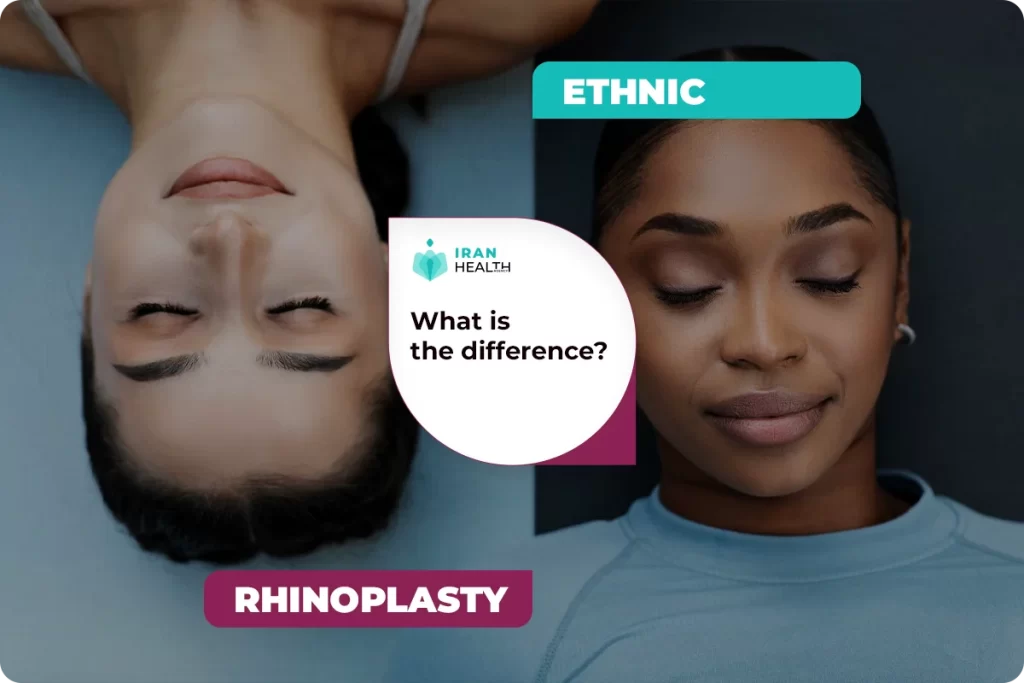
The reasons people undergo ethnic rhinoplasty
Rhinoplasty for ethnics is all about enhancing natural features, fixing dissatisfaction, addressing breathing problems, correcting flaws, reconstructing trauma, improving self-esteem, and looking younger. Consultation with a surgeon is key to achieving a refined, natural look that complements the person’s ethnicity and face.
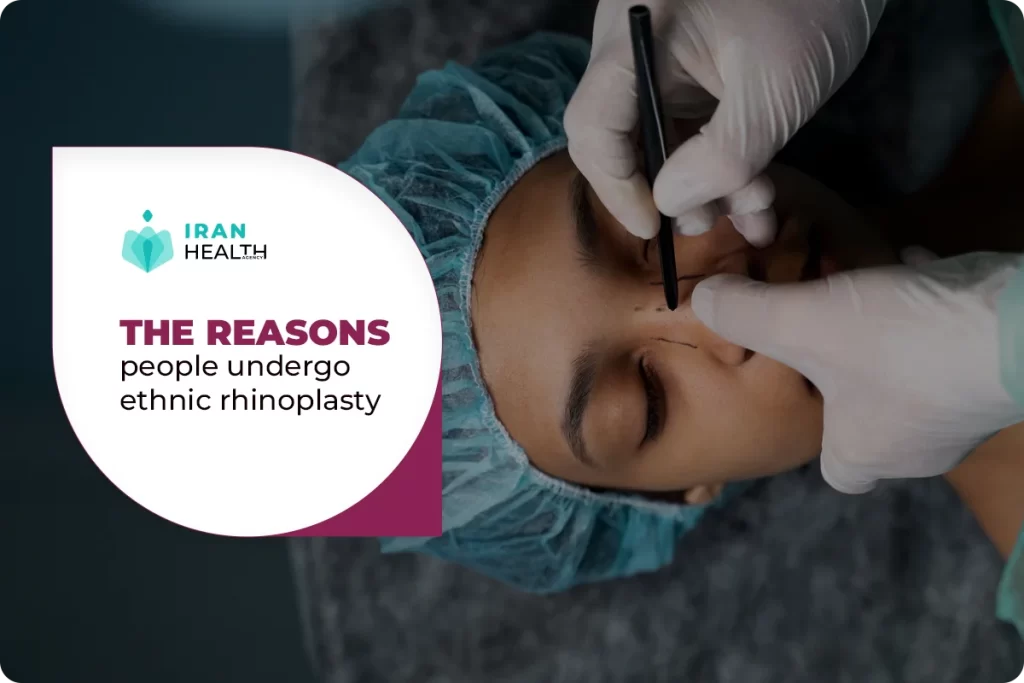
Nose with ethnic backgrounds:
There are some distinct characteristics and differences between an Asian nose, an African nose, and noses from other ethnic backgrounds:
Asian Nose:
- Often has a low and flat nasal bridge
- The nasal tip is wider and less defined
- The nostrils point downwards or are parallel to the upper lip
- The nasal bones are less pronounced
- The skin is thicker with more sebaceous glands

African Nose:
- Typically, it has a wider, flatter bridge
- The tip is thick and rounded
- Nostrils are wider, and more flared
- The angle between the upper lip and nose is more obtuse
- The nasal bones are shorter, and the nose protrudes less
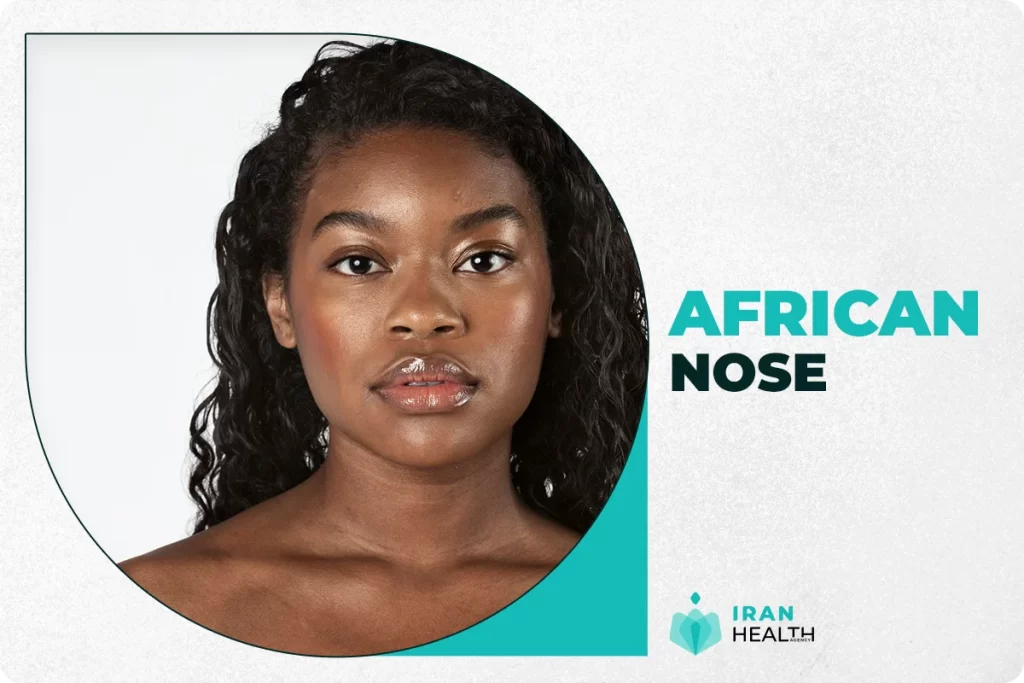
Caucasian/European Nose:
- Often, a narrow, high bridge with a pronounced slope
- The nasal tip is more defined and triangular
- The nostrils face slightly forward and down
- The nasal bones are longer, with greater projection
- The skin is thinner, with fewer sebaceous glands
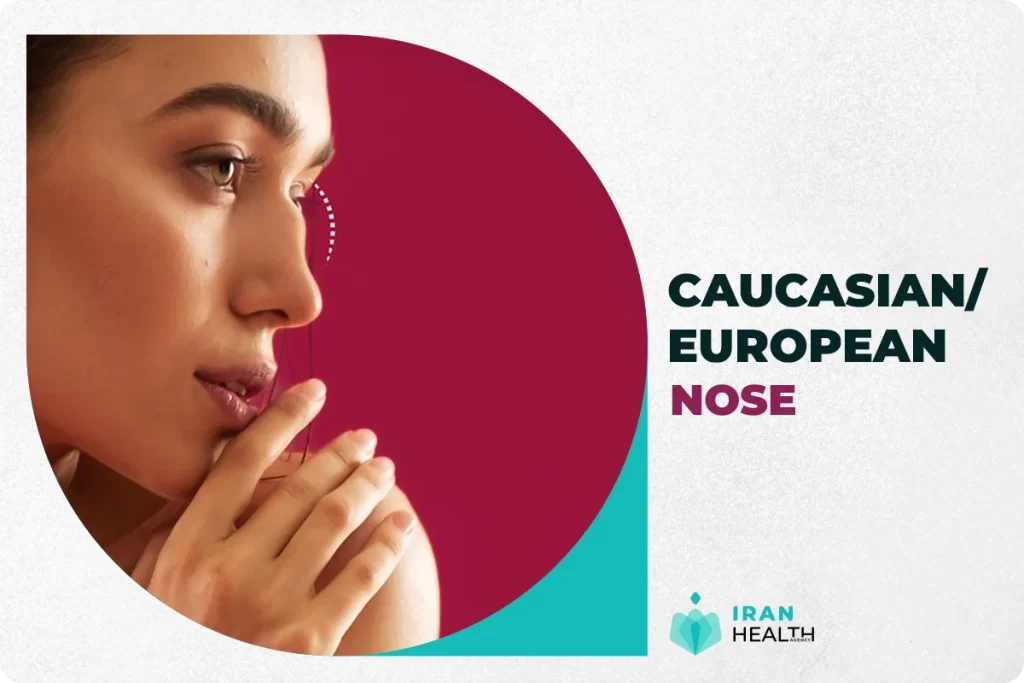
Hispanic/Latino Nose:
- It tends to have a low and smooth bridge
- The tip is bulbous and rounded
- The nostrils are more flared
- The bones and cartilage are strong and supportive
- There is thicker skin with more sebaceous glands

How is ethnic rhinoplasty performed in Iran?
Like elsewhere, Rhinoplasty in Iran is highly customized for each patient. The surgeon will assess the patient’s facial features, nose, and ethnicity to develop a surgical plan. Common techniques include:
- Raspberries or shavings down the nasal hump
- Refine the bridge’s shape and profile
- Augmentation of a building or under a bridge
- Narrow and wide nostrils
- Correction of crookedness
- How to adjust projections, rotations, and other refinement techniques.
- Placement of structural grafts to improve shape and support
The incisions are usually made inside the nostrils, with no external scarring. Pain and recovery time are minimal.
If you are not satisfied with the results of your ethnic rhinoplasty, you may consider a revision rhinoplasty to correct any issues or complications.
Why this is done?
Ethnic nose job can be used for the following:
1.Make the overly flat nose more prominent and pronounced
2.Make a too small nose, defined
3. Helps improve the balance of the nose with the chin and forehead (achieving better balance of facial components)
4.Reduce the width of the nostrils that appear to be widening.
5.Reduce the overall width or length of the nose
6.Make the face more symmetrical
7. Achieve a significant change in facial silhouette
8.Who are the right candidates for ethnic nose job and are not?
The criteria for considering ethnic rhinoplasty are the same as the criteria for any rhinoplasty. The patient may not be satisfied with some aspects of his nose for years, such as a raised hump, a size that feels too big or too small, or a bulbous tip, and so on.

The best candidates must meet the following general requirements:
1.Good physical health without any illness or serious medical illness
2. Non-smoker
3.Full facial growth
4.Positive attitude towards life
5. Patients who have rational aesthetic aims and expectations
6.They have a nose defect that needs to be corrected.
7.They have reached the right age, which means that young people have to wait until they reach physical maturity and then do this procedure. Women usually reach maturity earlier at the age of 16, while male adolescents have to wait until the age of 18. This is because nose stops growing and changes significantly at this age.
Risks and side effects of ethnic rhinoplasty
Fortunately, significant complications from ethnic rhinoplasty are rare. Your possible risks for ethnic nose job will be explained during your consultation.
All surgical procedures have some degree of risk. Some of the possible side effects of all surgeries are:
1. Adverse reaction to anesthesia
2.Hematoma or seroma (accumulation of blood or fluid below the skin that will have to be compelled to be removed).
3. Infection and bleeding
4.Changes in sense
5.Scarring
6. Allergic reactions
7.Damage to underlying structures
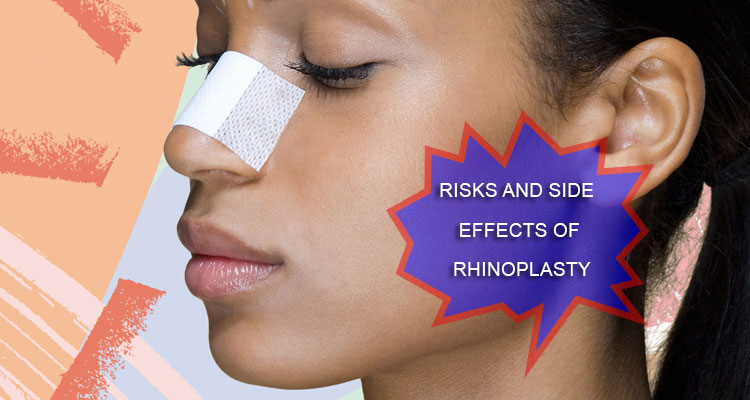
Other specific risks of rhinoplasty are as follows:
1.Skin problems or skin breakdown due to bandaging or grafting that being exposed through the thin skin, especially if foreign materials have been inserted.
2.Nasal blockage caused by swelling within the nose.
3.Damage to the septum, the structure that separates your nostrils
4.Prominent scar at the base of the nose with an open approach
5.Skin discoloration
6. Difficulty breathing
7. Perforation of the nasal septum (a hole in the nasal septum) is rare.
8. Unfavorable results that may require additional procedures (possibility of revision rhinoplasty)
You can minimize certain risks by following the recommendations and instructions of your board-certified plastic surgeon, both before and after ethnic rhinoplasty.
Fleshy or African nose:
In fact, it can be said that obtaining a satisfactory result from fleshy nose surgery is much more difficult than its bony type, and the surgeon has to spend a lot of money for surgery.
Contrary to the name of different types of noses, fleshy noses do not contain a lot of flesh or muscle, but have:
1.Thick and oily skin with obvious cavities
2.Wide tip with fat
3.Wide nose blade
4.Wide bottom
5.Weaker nasal cartilage
6.Raised nose horn from the profile
These characteristics cause the nose to become wider and bulky and the nasal lines to disappear in order to become more beautiful.
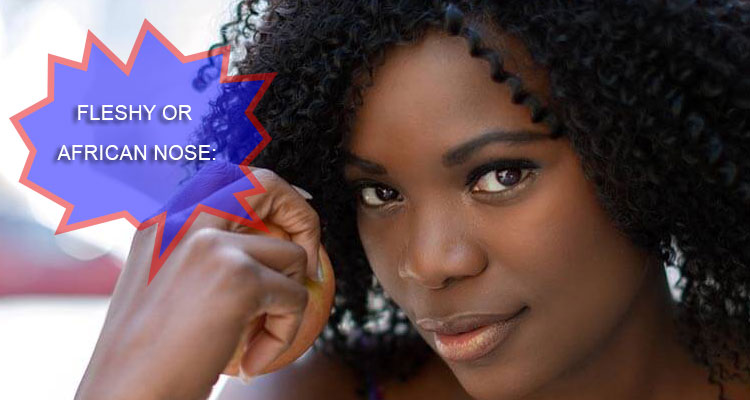
Here are some different types of African noses:
Fleshy nose with large cavities and active sebaceous glands:
Some fleshy noses have large cavities and sebaceous glands under the skin, which are called oily skin. Laser treatment or low-salt diets are recommended for these people. For patients undergoing fat control treatments, the surgeon usually postpones the surgery until six months after the end of their treatment.
Fleshy nose with inactive sebaceous glands:
Some patients have fleshy noses and inactive glands with red noses. In surgery for these types of noses, the surgeon creates a very beautiful shape using the bones and strong skeleton under the thick skin of the nose. Sometimes the surgeon brings the skin of the nose and the cartilage closer together to prevent the accumulation of extra tissue and secretions at the tip of the nose.
Fleshy rhinoplasty:
A good example of a fleshy nose is African noses. Their nose skin is thick and their cartilage is weak and thin. Older fleshy nose surgeries did not work because the cartilage that had been removed returned to its original shape after a while. Today, the probability of reversal or sagging is close to zero, because cartilage strengthening also occurs at the same time as the formation structure of the nose.
In new techniques, the surgeon transfers the septal cartilage to the tip of the nose to strengthen the cartilage of the nose. In fleshy nose surgery, maintaining facial fitness is crucial. If the nose becomes too small or if its deviations increase sharply, it may be difficult for the person to breathe.
To have better ethnic rhinoplasty, special techniques must be used:
Cartilage transplantation:
When the skin is thick, a cartilage graft is used to show the tip of the nose and improve the bridge of the nose.
Reduction of fat in soft tissue:
Soft tissue-building fats, especially at the tip of the nose, are skillfully removed to make it thinner and give the nose a better appearance.
Proportional reduction of nose size:
During surgery, if there is a gap between the skin and the nasal skeleton, the chances of scarring and the production of excess fat increase, which results in an unfavorable nasal deformity.
Structural support of the nose:
Due to its high weight, thicker skin needs a stronger structure to support it. Therefore, Iranian cosmetic surgeons will make a suitable part between the nose and its structure. Once the skin of the nose is in a normal position, the reinforced structure helps the skin to position properly. In general, thick-skinned fleshy nose surgeries require a great deal of skill and experience, and the surgeon’s knowledge of the proper size of the nose is critical to achieving a good result.
Some reasons why Iran is considered one of the best places for rhinoplasty:
- Very experienced and skilled surgeons with international reputations.
- State-of-the-art equipment and facilities.
- Lower cost compared to Western countries – price can range from $1,000-$3,000 on average.
- Large number of clinics and hospitals offering the procedure.
- Post-op care is excellent.


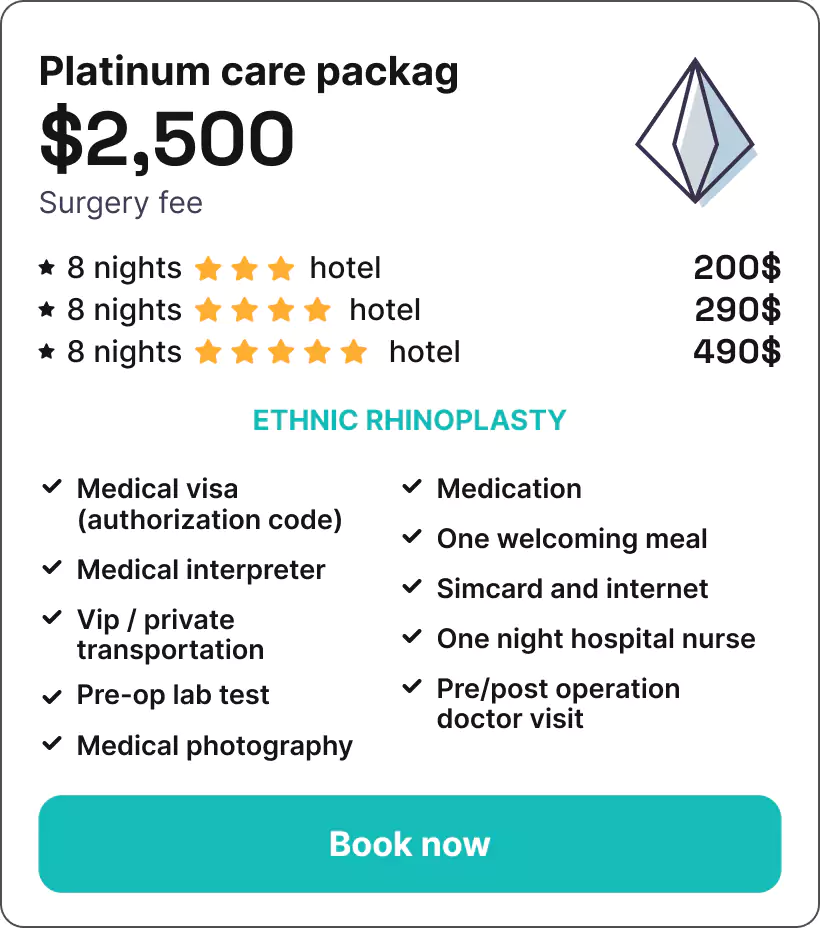
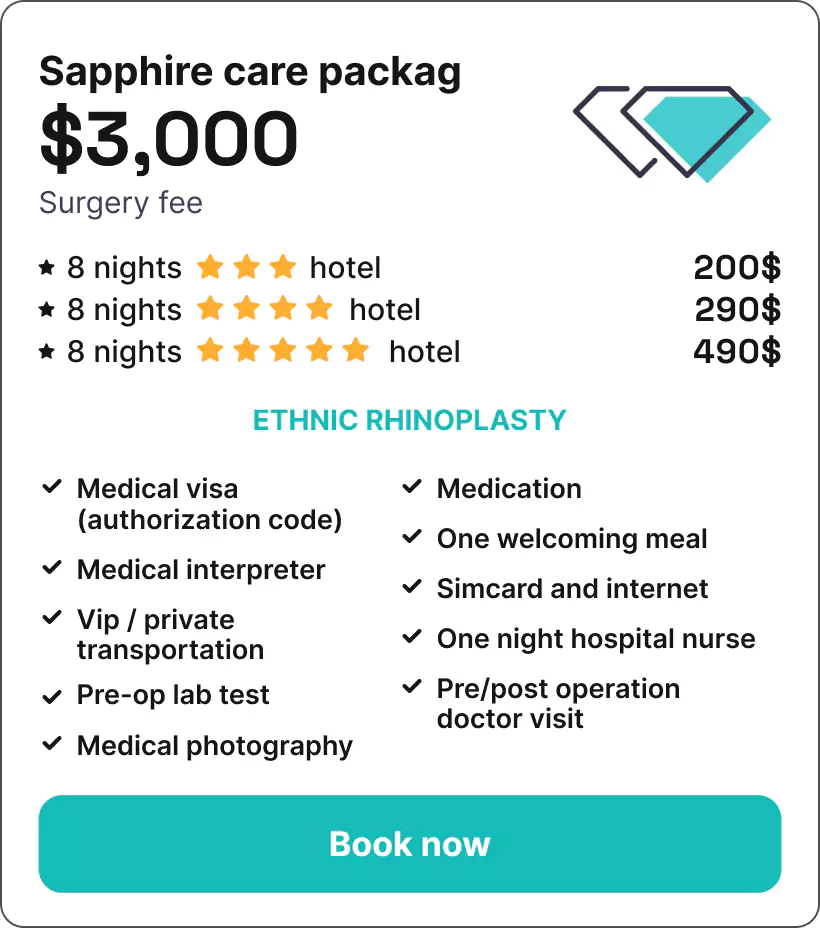
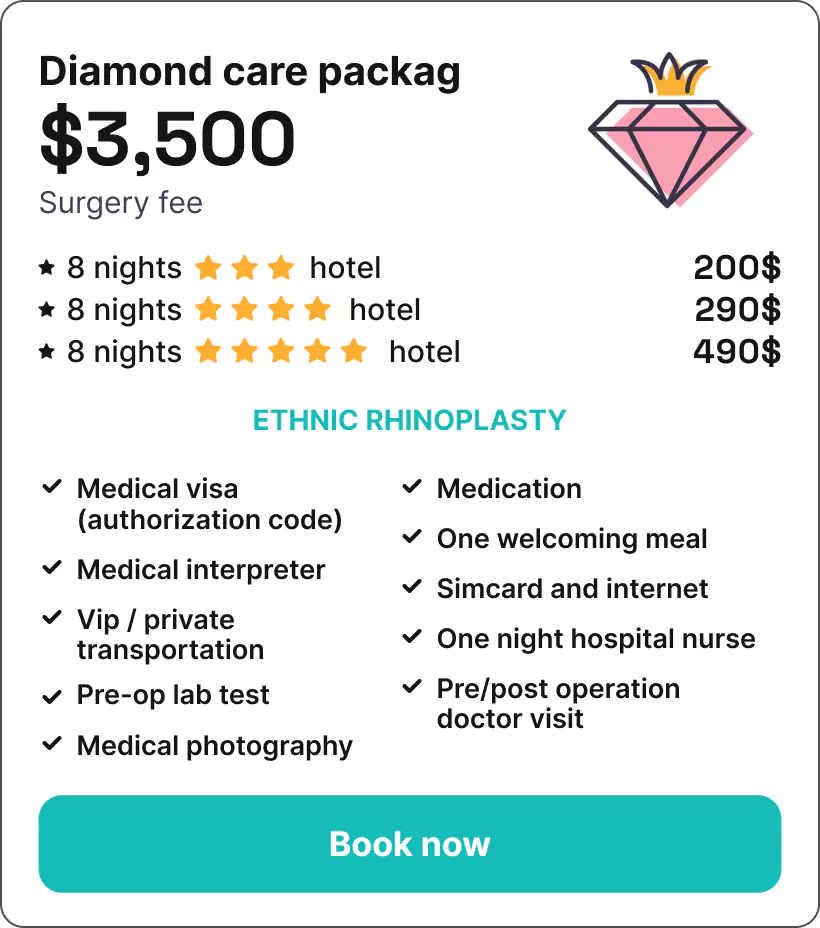

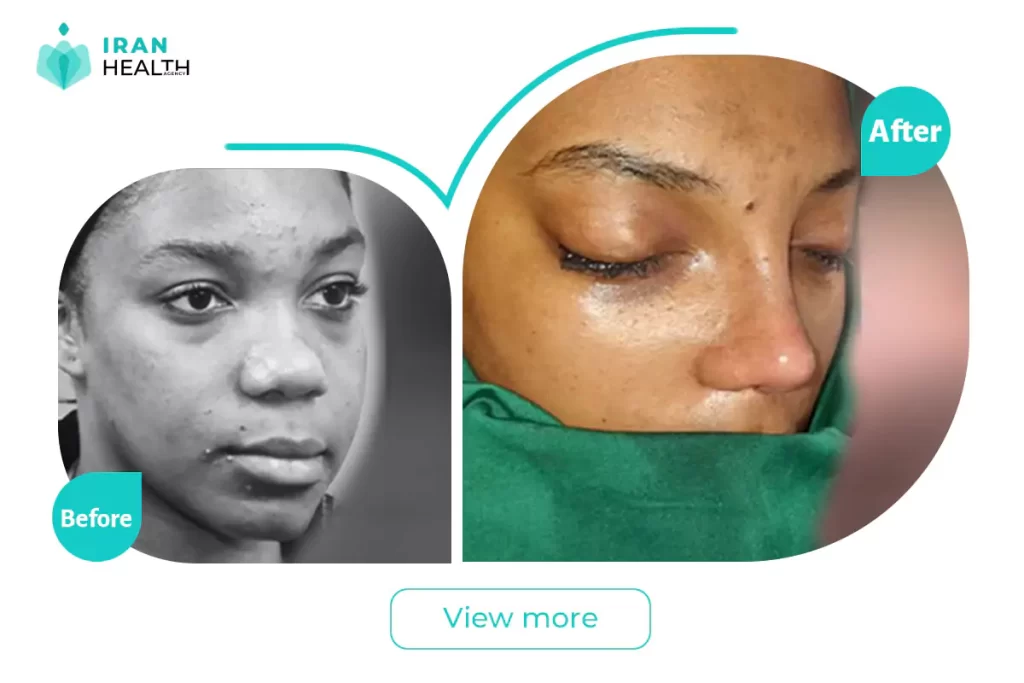

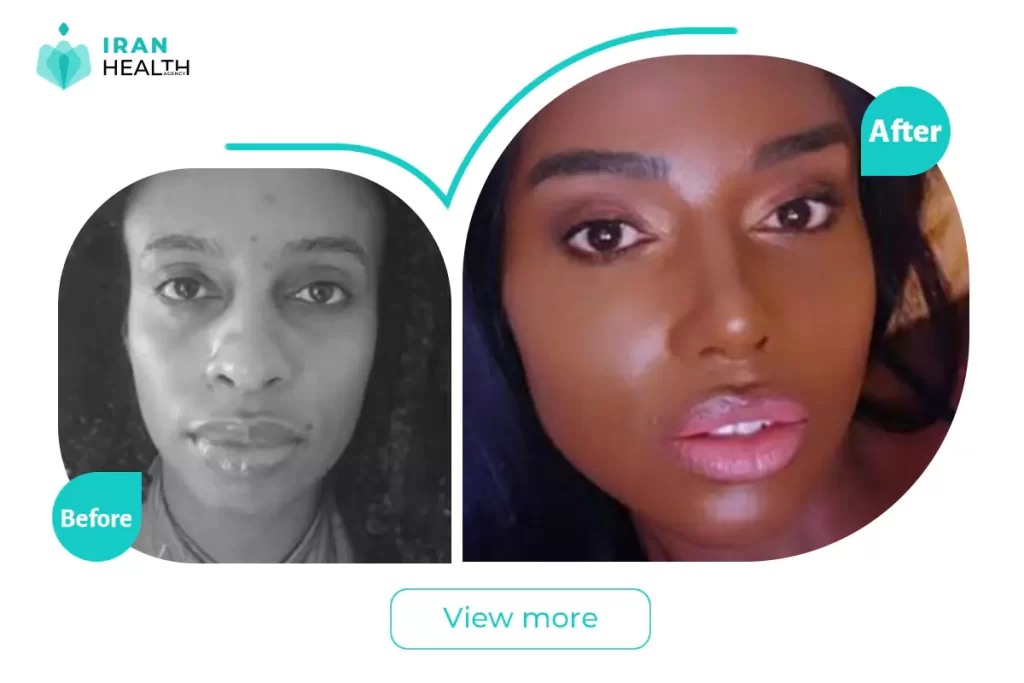

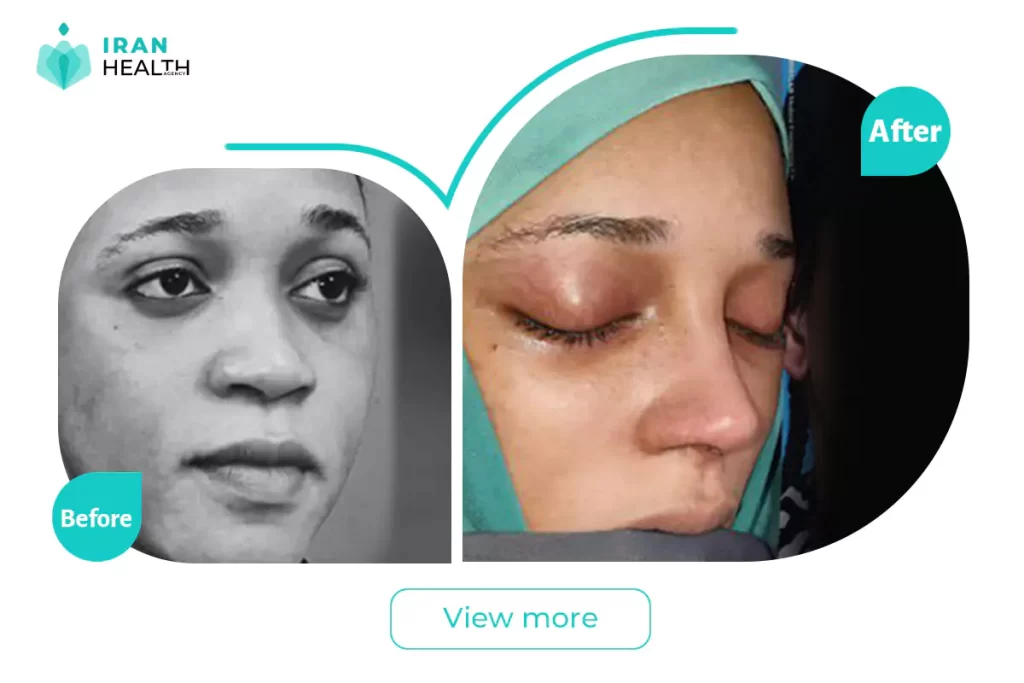
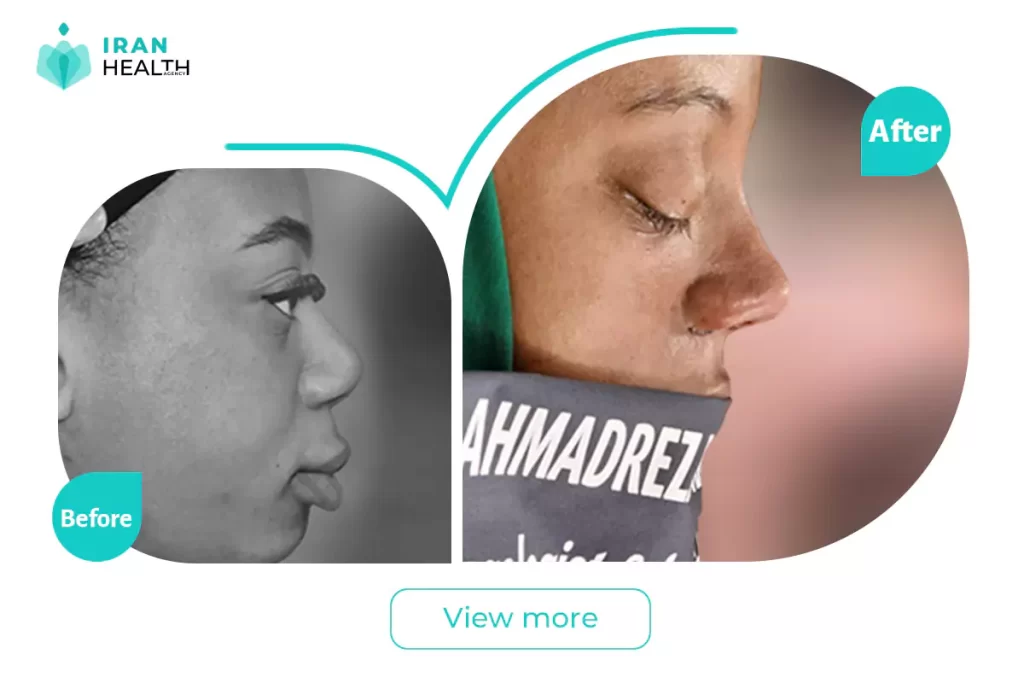
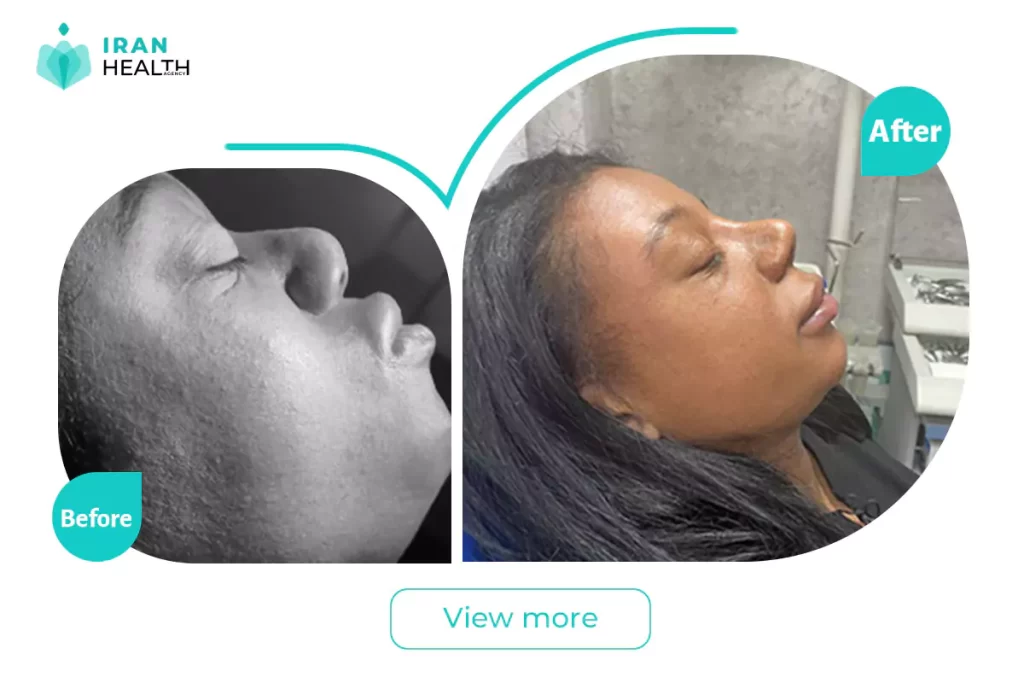
Which country is the best for ethnic rhinoplasty?